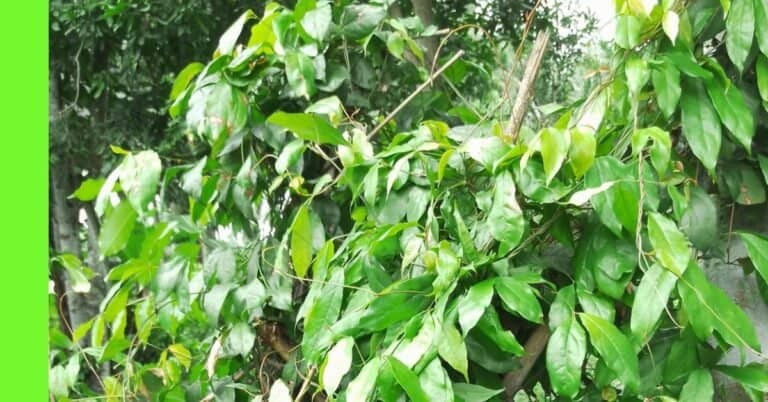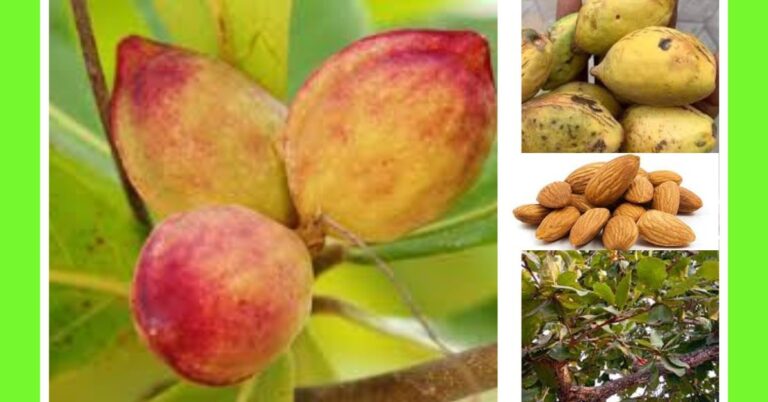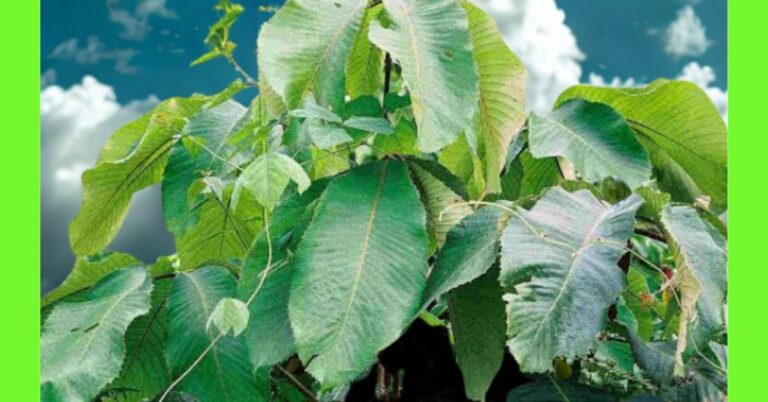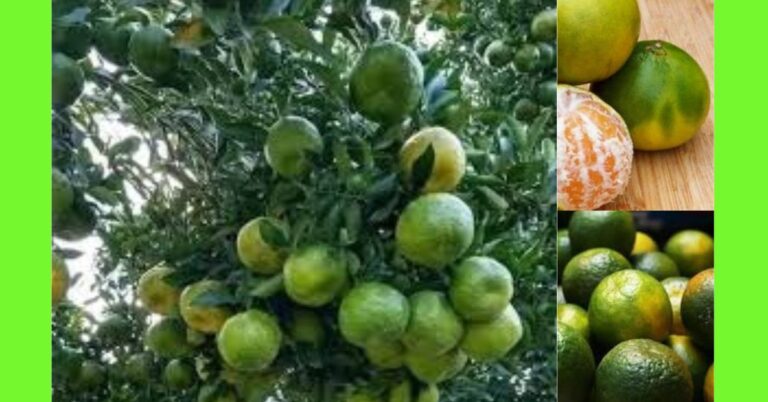Planting Bambara Nut: See How To Plant Bambara Nut
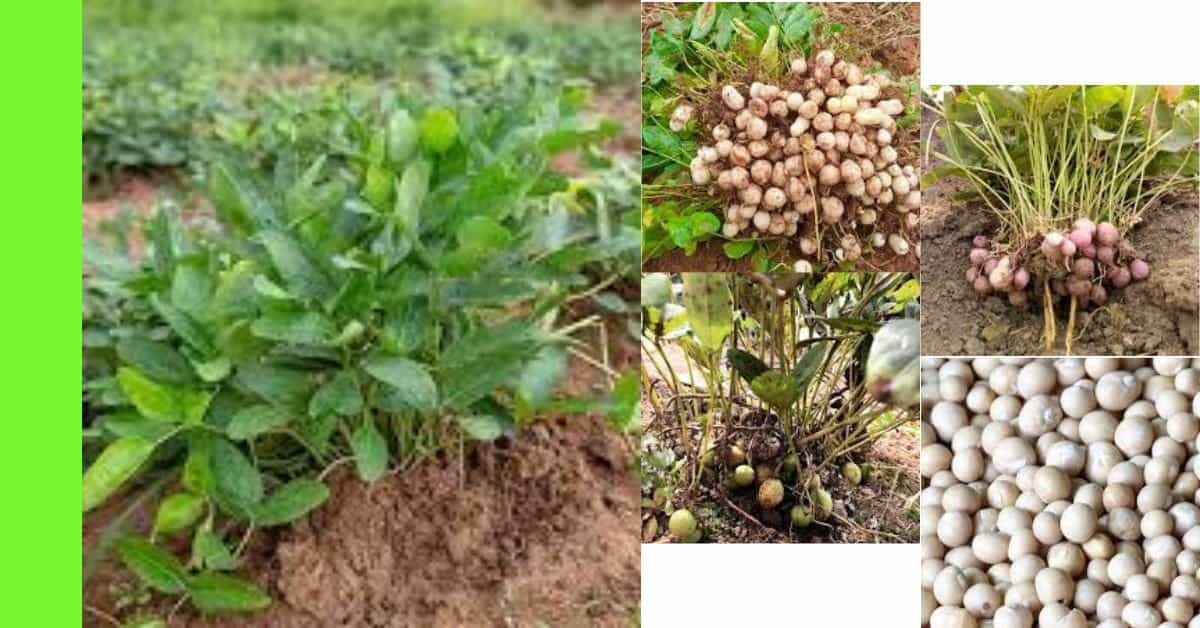
Bambara nut (Vigna subterranea), or Bambara groundnut, is an important leguminous crop grown in Nigeria.
It is known for its nutritional value, being a good source of protein, carbohydrates, and essential vitamins.
The nut is well-adapted to the semi-arid regions of Africa, where it thrives in poor soils and drought conditions.
In this article, we’ll dive deep into how to plant Bambara nuts in Nigeria, from land preparation to pest control so that you can achieve a bountiful harvest.
Description of a Bambara Nut Plant
Bambara nut is a drought-resistant annual legume that grows low to the ground.
Like groundnuts (peanuts), the plant produces pods below the soil.
The pods are small and round and contain one or two seeds that are typically brown, cream, or mottled.
Bambara nut plants have trifoliate leaves and produce yellow flowers.
The plant’s ability to fix nitrogen into the soil makes it highly beneficial for improving soil fertility, making it an excellent crop in rotation farming.
Planting Season for Bambara Nut in Nigeria
The best time to plant Bambara nuts in Nigeria is during the early rainy season.
In most regions, it begins between March and June.
Bambara nut thrives in well-drained, sandy loam soils and needs a warm temperature range of 20°C to 28°C to germinate successfully.
While the crop is drought-tolerant, consistent moisture during the growing season will increase yields.
Planting Bambara Nut
Step 1: Choose a Location
Selecting the right location is crucial for growing Bambara nuts.
The crop grows best in areas with full sunlight, good drainage, and light, sandy-loam soil.
Ensure the area is waterlogged-free, as Bambara nut roots can rot in overly wet conditions.
Choose land not used to grow leguminous crops recently to avoid disease buildup.
Step 2: Land Clearing and Preparation
Before planting Bambara nuts, clear the land of any weeds, shrubs, and debris.
Mechanical or manual land-clearing methods can be used for large-scale planting.
Once the land is cleared, plough and harrow the soil to loosen it.
This step will improve soil aeration and water infiltration, which is essential for Bambara nut growth.
Step 3: Means of Propagation
Bambara nuts are propagated by seeds.
It is essential to use healthy, viable seeds for planting.
You can either buy seeds from certified suppliers or use seeds from a previous harvest.
To ensure a good germination rate, soak the seeds in water for a few hours before planting to soften the seed coat and promote faster germination.
Step 4: How to Plant Bambara Nut from Seed
Bambara nut seeds should be planted directly into the soil at a depth of about 5-7 cm.
The recommended planting spacing is 50 cm between rows and 20 cm between plants within each row.
This spacing ensures enough room for the plant to spread and grow underground pods.
After planting, cover the seeds lightly with soil, taking care not to bury them too deep.
Step 5: Watering
Though Bambara nut is drought-tolerant, watering during the early stages of growth will significantly boost germination and establishment.
During the first few weeks after planting, provide adequate moisture to encourage seed germination and plant development.
After the plants are established, they will need less frequent watering, especially during periods of sufficient rainfall.
Step 6: Apply Manure
To enhance soil fertility and promote vigorous growth, it’s essential to apply organic manure or compost during land preparation.
Bambara nut can fix nitrogen in the soil, but additional organic matter, such as compost or well-decomposed farmyard manure, will improve soil structure and increase yields.
A moderate application of phosphorus-rich fertilizer (e.g., single super phosphate) may also be added to boost root and pod formation.
Maturity and Harvest
Bambara nuts typically take between 90 and 150 days to mature, depending on the variety and growing conditions.
The plant will flower after about 30-40 days, and the pods will form and mature underground.
Once the leaves start to yellow and the pods feel hard and firm when dug up, the crop is ready for harvest.
To harvest, carefully dig around the plant to avoid damaging the underground pods.
Lift the plant with its pods intact and allow them to dry under the sun for a few days.
Once dried, the pods can be separated from the plant by hand or using mechanical thrashers.
Store the harvested pods in a cool, dry place to prevent spoilage and mould growth.
Pest and Diseases
Although Bambara nut is a hardy plant, it is not immune to pests and diseases.
Some common pests include aphids, pod borers, and termites, which can attack the leaves, stems, or underground pods.
The plant is also susceptible to fungal infections like powdery mildew and root rot, particularly in waterlogged conditions.
Pest and Disease Control
- Aphids and Pod Borers: Regular inspection of the crop for signs of aphid infestation or pod borers is essential. Insecticidal soap or neem oil can be used to control aphids, while chemical insecticides can manage pod borers.
- Fungal Infections: Ensure proper drainage to prevent fungal diseases. Fungicides like copper-based treatments can help control fungal infections such as powdery mildew.
- Termites: Using termite-resistant materials in the field or applying termiticides can protect the plants from termite damage.
Additionally, practising crop rotation and avoiding continuous planting of Bambara nuts on the same land can reduce the buildup of soil-borne pests and diseases.
How Many Bambara Nut Plants Can I Grow on an Acre of Land?
An acre of land can accommodate approximately 35,000 to 40,000 Bambara nut plants, depending on the planting spacing used.
You can expect an average yield of 600 to 1,000 kg of Bambara nuts per acre with optimal soil preparation, proper spacing, and good management practices.
However, factors such as soil fertility, rainfall, and pest control can significantly impact the final yield.
In conclusion, growing Bambara nuts in Nigeria is a rewarding venture.
Following proper planting, maintenance, and harvesting practices, you can cultivate a healthy crop and enjoy the benefits of this nutritious legume.
Whether for personal consumption or commercial farming, Bambara nuts offer excellent potential for improving soil fertility and generating income.
I hope this article was helpful.



